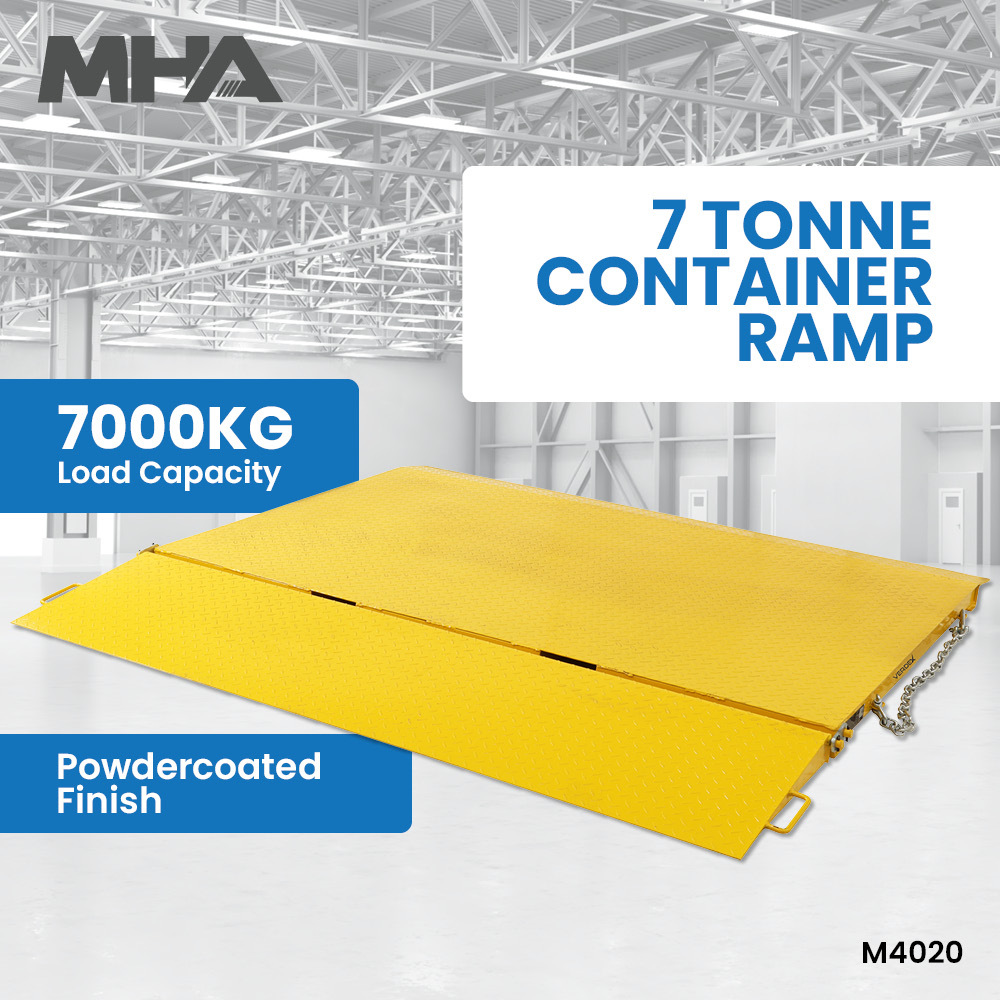Portable Ramps - Enhancing Accessibility & Mobility
Date Posted:9 August 2024
Portable ramps are essential tools that enhance accessibility, mobility, and safety for individuals with disabilities and facilitate the efficient movement of goods in various environments.
Portable ramps play a pivotal role in enhancing accessibility and mobility for individuals with disabilities, as well as facilitating the smooth movement of goods in various environments. Designed to bridge height gaps and overcome architectural barriers, portable ramps offer flexibility, convenience, and safety. This article explores the benefits, types, and practical applications of portable ramps, highlighting their importance in promoting inclusivity and efficiency.
Benefits of Portable Ramps
1. Accessibility: The primary benefit of portable ramps is their ability to provide access to spaces that may otherwise be inaccessible to individuals with mobility impairments. Whether it's entering buildings, vehicles, or navigating uneven terrain, portable ramps offer a solution that promotes independence and inclusivity.
2. Mobility Enhancement: Portable ramps enable wheelchair users, individuals using walkers, and those with limited mobility to navigate obstacles with ease. They eliminate the need for assistance and allow users to maintain their autonomy in everyday activities.
3. Versatility: Portable ramps come in various designs and materials to suit different needs and environments. They can be used indoors and outdoors, on stairs, curbs, thresholds, and other uneven surfaces, providing a seamless transition for users.
4. Safety: Well-designed portable ramps prioritize safety with features such as non-slip surfaces, raised edges, and sturdy construction. These elements ensure stability and prevent accidents, offering peace of mind to both users and caregivers.
5. Convenience and Portability: As the name suggests, portable ramps are lightweight and easy to transport. They can be folded or rolled up for compact storage and carried from one location to another, making them ideal for temporary use or travel.
Types of Portable Ramps
1. Folding Ramps: Folding ramps are versatile and easy to transport. They typically consist of two or more sections that fold together for compact storage. Folding ramps are commonly used for accessing vehicles, stages, and small height differences.
2. Telescoping Ramps: Telescoping ramps extend to various lengths, allowing for adjustment to different heights and configurations. They are versatile for use in homes, offices, and public spaces where the height of the landing may vary.
3. Threshold Ramps: Threshold ramps are designed to bridge gaps at doorways and thresholds. They provide a smooth transition for wheelchair users and individuals using mobility aids to enter and exit buildings with ease.
4. Multi-Fold Ramps: Multi-fold ramps feature multiple sections that fold accordion-style. They are suitable for overcoming higher elevation changes and are commonly used in commercial settings and public spaces.
5. Roll-Up Ramps: Roll-up ramps are made from flexible materials such as aluminum or reinforced rubber. They can be rolled into a compact cylinder for easy storage and transport, making them ideal for travel and temporary installations.
Practical Applications of Portable Ramps
1. Home Accessibility: Portable ramps improve accessibility within homes by allowing wheelchair users and individuals with mobility challenges to navigate stairs, thresholds, and entryways independently. They enable residents to remain in their homes safely and comfortably.
2. Public Spaces: In public spaces such as parks, schools, and government buildings, portable ramps ensure compliance with accessibility regulations (e.g., ADA in the United States). They provide access to amenities and services for all individuals, promoting inclusivity and equal participation.
3. Transportation: Portable ramps are essential for accessing vehicles, including cars, vans, buses, and trains. They facilitate loading and unloading of wheelchairs and mobility scooters, ensuring seamless transportation for individuals with disabilities.
4. Events and Venues: Event organizers and venue managers use portable ramps to provide accessibility for attendees with disabilities. Ramps enable access to stages, podiums, seating areas, and other event spaces, ensuring that everyone can participate fully.
5. Commercial and Industrial Settings: In commercial settings, portable ramps facilitate the movement of goods and equipment. They enable loading and unloading of deliveries, improve workflow efficiency, and ensure compliance with safety regulations in warehouses and factories.
Choosing the Right Portable Ramp
When selecting a portable ramp, consider the following factors:
1. Length and Height: Choose a ramp that matches the height difference it needs to bridge. Measure the rise (height) and ensure the ramp is long enough for a safe incline ratio (typically 1:12 for ADA compliance).
2. Weight Capacity: Ensure the ramp can support the weight of the user and any mobility device or equipment being used. Check the weight capacity specified by the manufacturer to prevent accidents and damage to the ramp.
3. Surface and Grip: Opt for a ramp with a non-slip surface to provide traction in all weather conditions. Raised edges or guardrails enhance safety, preventing wheelchairs and mobility aids from slipping off the sides.
4. Portability and Storage: Consider the portability of the ramp, especially if it needs to be moved frequently or transported between locations. Choose ramps that are lightweight, foldable, or roll-up for easy storage and transport.
5. Durability and Maintenance: Select ramps made from durable materials such as aluminum or reinforced rubber that withstand frequent use and outdoor conditions. Ensure the ramp is easy to clean and maintain for long-term usability.
Portable ramps are essential tools that enhance accessibility, mobility, and safety for individuals with disabilities and facilitate the efficient movement of goods in various environments. Whether used at home, in public spaces, or commercial settings, portable ramps provide a practical solution for overcoming architectural barriers and ensuring equal access for all. By choosing the right type of portable ramp based on specific needs and considerations, individuals and organizations can improve independence, comply with accessibility regulations, and promote inclusivity in their communities. Investing in high-quality portable ramps not only enhances physical access but also fosters a more inclusive and equitable society where everyone can participate fully.



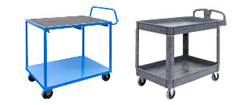

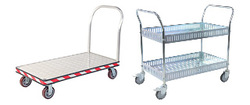
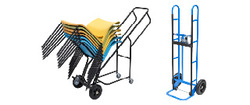
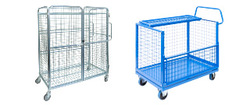
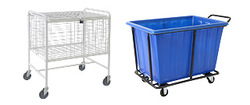
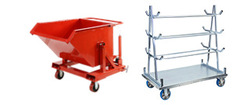
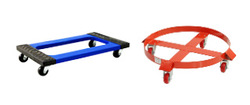
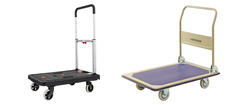
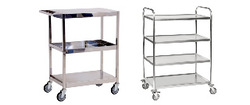
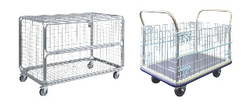
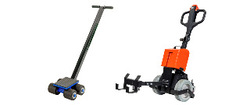
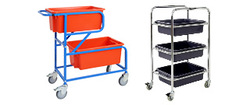
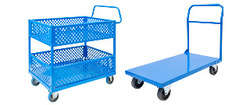
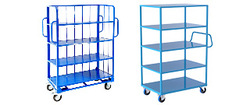
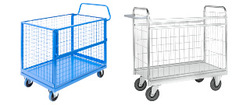
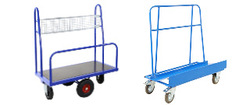
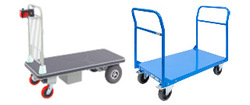
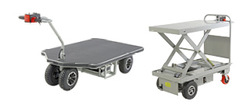
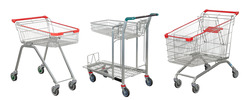
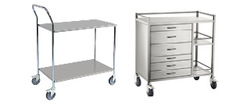
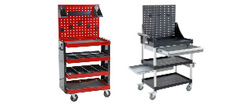
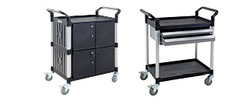
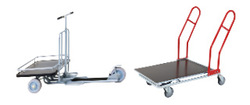
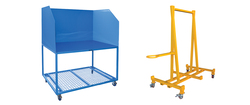



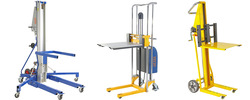



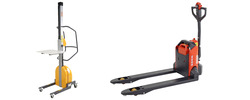
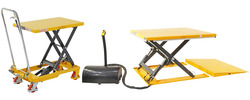
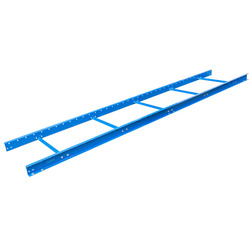
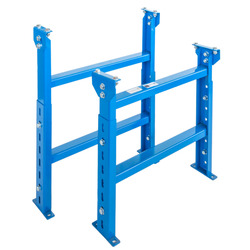
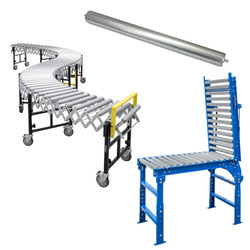
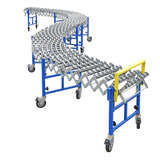


















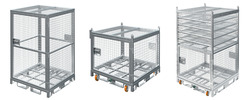

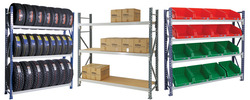
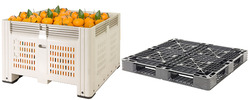
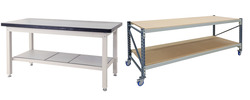
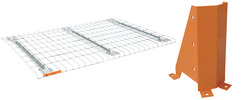
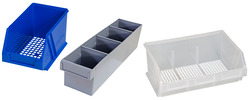

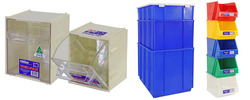

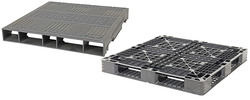

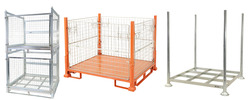
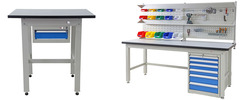
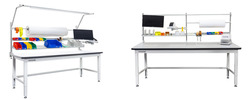


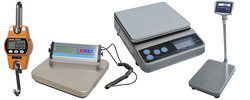



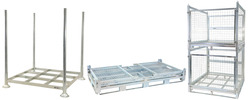
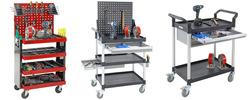
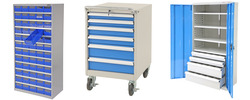

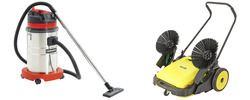











 Trolleys / Hand Trucks
Trolleys / Hand Trucks 2 Tier Trolleys
2 Tier Trolleys 3 Tier Trolleys
3 Tier Trolleys Aluminium Trolleys
Aluminium Trolleys Appliance & Hand Trucks
Appliance & Hand Trucks Cage Trolleys
Cage Trolleys Cleaning Carts & Trolleys
Cleaning Carts & Trolleys Construction Trolleys
Construction Trolleys Dollies
Dollies Foldable Trolleys
Foldable Trolleys Hospital Trolleys
Hospital Trolleys Laundry/Linen Trolleys
Laundry/Linen Trolleys Load Skates & Tow Tugs
Load Skates & Tow Tugs Mail / Office Trolleys
Mail / Office Trolleys Multi Purpose Trolleys
Multi Purpose Trolleys Multi-Tier Shelf Trolleys
Multi-Tier Shelf Trolleys Order Picking Trolleys
Order Picking Trolleys Panel Cart Trolleys
Panel Cart Trolleys Platform Trolleys
Platform Trolleys Powered Trolleys
Powered Trolleys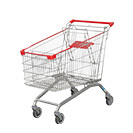 Shopping Trolleys
Shopping Trolleys Stainless Steel Trolleys
Stainless Steel Trolleys Tool Trolleys
Tool Trolleys Utility Carts
Utility Carts Warehouse Trolleys
Warehouse Trolleys Custom Trolleys
Custom Trolleys Lifting Equipment
Lifting Equipment Forklift Attachments
Forklift Attachments Jib Attachments
Jib Attachments Lifting Hoists & Pallet Hooks
Lifting Hoists & Pallet Hooks Manual Stackers & Lifters
Manual Stackers & Lifters Pallet Jacks
Pallet Jacks Pallet Lifters
Pallet Lifters Pallet Rotators & Dispenser
Pallet Rotators & Dispenser Powered Pallet Trucks & Electric Lifters
Powered Pallet Trucks & Electric Lifters Scissor Lift Trolleys and Tables
Scissor Lift Trolleys and Tables Conveyor Equipment
Conveyor Equipment Conveyor Frames
Conveyor Frames Conveyor Stands
Conveyor Stands Roller Conveyors
Roller Conveyors Skate Wheel Conveyors
Skate Wheel Conveyors Access Equipment
Access Equipment Container & Yard Ramps
Container & Yard Ramps Step Stools & Ladders
Step Stools & Ladders Work Platforms & Crane Cages
Work Platforms & Crane Cages Drum Handling
Drum Handling Drum Storage & Bunding
Drum Storage & Bunding Drum Trolleys & Lifters
Drum Trolleys & Lifters Forklift Drum Handling
Forklift Drum Handling Containment & Spillage
Containment & Spillage Aerosol Cans Storage Cages
Aerosol Cans Storage Cages Bunded Pallets & Storage
Bunded Pallets & Storage Corrosive Goods Storage Cabinets
Corrosive Goods Storage Cabinets Flammable Liquid Cabinets
Flammable Liquid Cabinets Forklift Gas Storage Cages
Forklift Gas Storage Cages Gas Cylinder Storage
Gas Cylinder Storage Site Storage
Site Storage Spill Kits
Spill Kits Stillage Cages
Stillage Cages Waste Handling
Waste Handling Bin Lifters & Tippers
Bin Lifters & Tippers Plastic Waste Bins and Carts
Plastic Waste Bins and Carts Steel Waste and Tipping Bins
Steel Waste and Tipping Bins Storage Equipment
Storage Equipment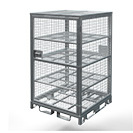 750 Series Cage Configurations
750 Series Cage Configurations Heavy Duty Cabinets & Benches
Heavy Duty Cabinets & Benches Heavy Duty Shelving
Heavy Duty Shelving Mega Bins & Pallets
Mega Bins & Pallets Packing Benches
Packing Benches Pallet Racking Accessories
Pallet Racking Accessories Parts Trays & Stor-Pak Bins
Parts Trays & Stor-Pak Bins Pegboard & Louvre Panels
Pegboard & Louvre Panels Plastic Bins
Plastic Bins Plastic Handling Solutions Bins
Plastic Handling Solutions Bins Plastic Pallets
Plastic Pallets Stack & Nest Bins
Stack & Nest Bins Storage Cages
Storage Cages Workplace Equipment
Workplace Equipment Workbenches
Workbenches Modular Workbenches
Modular Workbenches Electric Height-Adjustable Workbenches
Electric Height-Adjustable Workbenches Floor Matting
Floor Matting Industrial Weighing Scales
Industrial Weighing Scales Pallet Wrapping & Packaging Machinery
Pallet Wrapping & Packaging Machinery Ramps
Ramps Stationery Cupboards
Stationery Cupboards Storage and Stillage Cages
Storage and Stillage Cages Tool Trolleys
Tool Trolleys Tooling Cabinets
Tooling Cabinets Wheelie Bins
Wheelie Bins Workshop Equipment
Workshop Equipment Safety Equipment
Safety Equipment Gloves and PPE
Gloves and PPE Pallet Rack Post Protectors
Pallet Rack Post Protectors Safety Barriers & Bollards
Safety Barriers & Bollards Safety Knives & Cutters
Safety Knives & Cutters Signs and Traffic Supplies
Signs and Traffic Supplies Tool & First Aid Boxes
Tool & First Aid Boxes Construction Equipment
Construction Equipment Concrete Equipment
Concrete Equipment General Site Equipment
General Site Equipment Lifting Equipment
Lifting Equipment Site Storage
Site Storage Waste
Waste 

